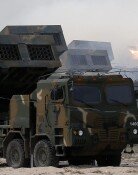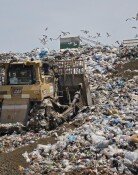10 dead after Korean fishing boat capsizes Saturday
10 dead after Korean fishing boat capsizes Saturday
Posted September. 07, 2015 00:45,
The fatal capsize of the fishing boat Dolphin that occurred off the coast of Chuja Island, northwest of Jeju Island, shows that Korean society is still insensitive to safety even after the tragedy of deadly sunken ferry Sewol. The accident of Dolphin carrying 20 passengers on a fishing trip, which left Chuja Island at 7 p.m. on Saturday, is almost identical to the disaster of Sewol ferry that occurred on Apr. 16 last year. The number of listed passengers was 22, but the on-board passenger report was not accurate, which makes it hard to figure out how many passengers were on the vessel. Officials found that one who was not listed had survived from the accident and four passengers whose names were in the list did not actually board the ship.
The Korean government called for a "nation-wide reform," disbanded the coast guard and established the Ministry of Public Safety and Security in the wake of Sewol ferry disaster. However, the public cannot feel at first hand how the coast guard has changed or how the ministry works to protect the public safety. This time again, like the Sewol ferry accident, the coast guard failed to rescue anyone throughout the night. Three survivors were rescued at 6:25 a.m. on Sunday by a fishing boat, not the coast guard.
Survivors said they heard a thundering noise right after leaving the port and then the boat capsized. Our boat is connected to the coast guard by pushing a button. Dont worry. Theyll be here soon, said the captain according to survivors. Boats like Dolphin, which are equipped with the V-Pass system to transmit signals to notify where it is, have a button to call for emergency rescue. However, it is hard to understand why the coast guard had not received any signals until Dolphin No. 1, which left the port together with Dolphin, reported to the coast guard. Communication from Dolphin was stopped right after the overturn at 7:40 p.m. on Saturday, but the coast guard has not received any report of the missing boat until 9:03 p.m., which was 80 minutes after the accident. The reason why must be investigated.
Fishing boats are required to receive a safety confirmation from the Korea Ship Safety Technology Authority. But the 9.8-tonne boat Dolphin, which has operated as a fishing boat since 2008, has never received any safety inspection over the past seven years. It is similar to the case of Sewol, in which the ships structure was illegally changed and the amount of ballast water was reduced, making the ship vulnerable to the accident. Since the Sewol ferry tragedy, the government has tightened safety regulations for ferries. But fishing boats were not subject to the tightened safety regulations. Last month, the Korea Ship Safety Technology Authority under the Ministry of the Public Safety and Security and the Ministry of Maritime Affairs and Fisheries have launched a large-scale safety inspection on boats before the summer vacation season and South Jeolla Province has conducted general safety inspections on fishing boats. These safety inspections must have been conducted in a superficial way.
Korean citizens safety awareness has not been raised at all. Most of passengers were not wearing life jackets. According to survivors, they took off the life jackets as they got wet in the rain. The captain of Dolphin No. 1 sailed back to the port as the weather conditions deteriorated and suggested the captain of Dolphin that the boat should go back to the port. But Dolphins captain ignored the advice and got into the accident. The coast guard passed the buck of safety inspection to the ship owners and operators, citing difficulties to inspect numerous vessels one by one. Ship owners and operators put safety of passengers to the back burner, being busy making profits during the peak season. How much more disasters would be needed to make the government and private sector put the highest priority on safety?







